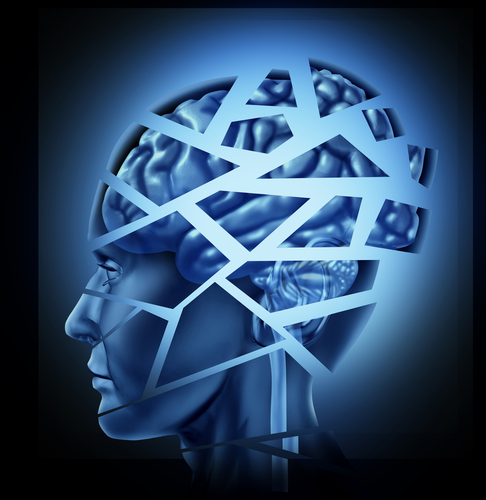Electrical Brain Stimulation Found to Safely Reduce Sjogren’s Fatigue
Written by |

A technique that delivers low electric currents to stimulate specific parts of the brain can safely reduce fatigue in people with primary Sjogren’s syndrome (pSS), a pilot study has found.
Transcranial direct-current stimulation (tDCS) also helped patients in the areas of sleep quality, stress, depression, and pain, supporting further research into its use for fatigue in Sjogren’s syndrome, investigators said.
The study, “Transcranial direct current stimulation for fatigue in patients with Sjogren’s syndrome: A randomized, double-blind pilot study,” was published in the journal Brain Stimulation.
Fatigue is a common symptom of Sjogren’s that is associated with many health burdens, including physical disability, sleep disturbances, depression, and low quality of life.
Current guidelines recommend only exercise to manage Sjogren’s fatigue. While several medications to alleviate fatigue have been investigated, none have shown efficacy.
tDCS has been shown to reduce fatigue in people with neurological conditions such as multiple sclerosis and Parkinson’s disease. However, the approach has not been examined in people with Sjogren’s syndrome who experience fatigue.
To address this, researchers based at the Federal University of São Paulo in Brazil designed a pilot study (NCT04119128) to assess the feasibility, efficacy, and safety of tDCS on fatigue in patients with primary Sjogren’s syndrome.
The study included 36 women, on stable medications, who reported fatigue for at least three months and scored above 5 in the Fatigue Severity Scale (FSS). Half of the participants were randomly assigned to tDCS, while the remaining half were treated with sham tDCS as a control.
The tDCS was delivered with two rubber electrodes, placed in the forehead area. Participants in the treatment group underwent five sessions on consecutive days for 20 minutes per day. For participants’ comfort, a gradual ramp-up and ramp-down of the current was used, with a 30-second duration.
For the sham tDCS, electrodes were placed in the same way as in the treatment group, and stimulation was applied for 20 min, with no current between the ramp-up and ramp-down. As such, sham stimulation looked and felt identical to active stimulation.
The primary outcome was change in fatigue severity as measured by the FSS scale, with higher scores indicating greater fatigue. Assessments were conducted before treatment (baseline), after five tDCS sessions, then 15 days and 30 days after the end of tDCS sessions.
The results revealed the tDCS-treated group showed significantly greater reductions in FSS scores — indicating fatigue lessening — compared with the sham group.
After five sessions, compared to baseline, those given tDCS showed a mean reduction in FFS score of 1.18 points compared to 0.34 in the sham group. This represented an overall mean difference of 0.85 between the two groups.
There was a mean difference of 0.93 between treatment and sham groups 30 days after treatment, also significantly favoring the tDCS approach, while no significant differences between groups were found at 15 days.
The Profile of Fatigue and Discomfort (PROFAD) was then used to assess mental fatigue and somatic fatigue, characterized by an extreme focus on physical symptoms causing major emotional distress. While the mean differences in the PROFAD favored the tDCS group for lower mental and somatic fatigue at all time points, the differences between groups were not significant.
Similar to the results observed with the FSS, the EULAR Sjogren’s Syndrome Patient Reported Index (ESSPRI), which evaluates fatigue, pain, and dryness, also showed significantly greater fatigue reductions in the tDCS group after five sessions and at 30 days, but not at 15 days, after treatment.
Although the treatment group also showed significantly greater pain reductions, no differences were found in patient-reported dryness, general health, and quality of life at any timepoint.
“Overall, the measurements of fatigue assessed by the FSS, ESSPRI, and PROFAD showed great variability, and the median improvements in the active group were consistently higher than the sham group at all timepoints,” the researchers wrote.
Additional measures, including sleep quality, stress, depression, and pain, significantly improved in the tDCS group, but not in the sham group. Statistical analysis found improvements in sleep quality and decreases in pain were associated with reductions in patient-reported fatigue.
During the final assessments, 67% of those in the tDCS group said they “got better” compared with 44% in the sham group.
Skin redness around electrode sites was the only reported adverse event with 32 occurrences in the tDCS group and 12 in the sham group. No serious adverse events were reported.
“The procedure is relatively low-cost, noninvasive, and safe,” the researchers wrote. “Moreover, the equipment is portable, and the technique is easy to administer.”
“We believe this small but scientifically-rigorous study provides critical data, not only to support further research on dose refinement and future implementation of tDCS in pSS fatigue, but also upon which to base future studies of the effects of tDCS on other outcome measures in pSS patients,” they added.





